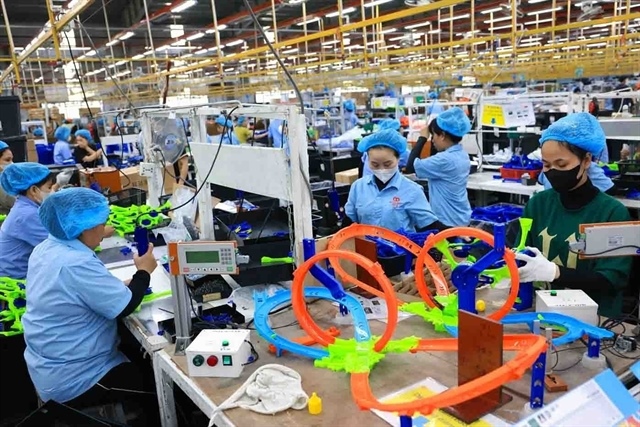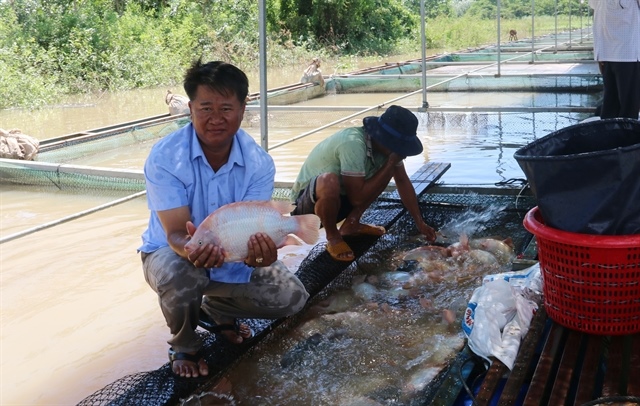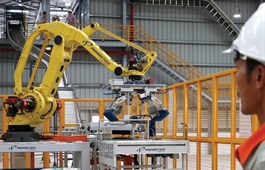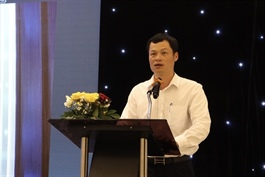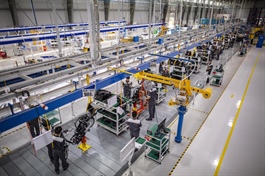Solar power tasks must be confronted
Solar power tasks must be confronted
As Vietnam ramps up its energy transition goals, rooftop solar has evolved from concept to commitment, with new legal foundations enabling investment-ready decisions across the industrial sector.
One of the clearest signs of a shift in the solar realm is seen among manufacturing enterprises, many of which are moving from exploring solar energy to actively seeking investment solutions.
According to SolarBK, new detailed provisions under the Electricity Law concerning the development of renewable energy has created a more defined legal corridor for renewable energy, setting the highest-level conditions yet for rooftop solar development.
“Last year, we spent time educating clients about the value of solar,” said Nguyen Ngoc Quynh, vice president of SolarBK at the country’s largest clean energy event, Solar & Storage Live Vietnam, last week. “This year, they’re asking how soon they can implement it.”
SolarBK sees rooftop solar as no longer just a cost-saving tool. For manufacturing clients, it has become part of long-term energy restructuring strategies. These include reducing dependency on the national grid, optimising underutilised assets like rooftops, and meeting increasingly strict environmental, social, and governance requirements from global buyers. Solar is also seen as a branding asset, helping exporters position themselves in low-carbon supply chains.
“Businesses view energy autonomy as a form of risk management,” Quynh noted. “It’s not only about efficiency, it’s about resilience.”
From SolarBK’s perspective, one key to scaling rooftop deployment is early legal preparedness. The company’s recent project in the northern province of Phu Tho was among the first to trial integrated procedures for grid connection and Vietnam Electricity (EVN) metering, helping shorten implementation timelines and improve operational outcomes.
To better match enterprise needs, SolarBK promotes a vertically integrated approach spanning system design, installation, operation, and asset optimisation.
“The investment threshold for rooftop solar depends on business priorities,” Quynh explained. “We encourage companies to define their own strategic goals first, whether for cost savings, carbon compliance, or innovation, then align with technical and financial partners accordingly.”
That alignment is already taking shape in the broader market. Pham Dang An, deputy general director of Vu Phong Energy Group, said the firm is preparing for Vietnam’s direct power purchase agreement mechanism, expected by 2026. This will allow factories to buy clean electricity directly from generators, bypassing the state utility.
“Such a mechanism could be a game-changer for industrial solar, especially when paired with operating lease models,” An said.
Vu Phong is currently deploying rooftop systems across both domestic and foreign manufacturers, and has expanded operations to Singapore and the Philippines.
“The firm sees a rising sense of urgency among clients, particularly in export-oriented sectors where low-carbon sourcing is becoming a competitive standard. With policies evolving and pressure from buyers increasing, companies now have to act faster to stay relevant,” An added.
Investors are watching the segment closely. Nguyen Huu Quang, portfolio manager for Clean Energy at Dragon Capital, highlighted that rooftop solar already makes economic sense for many manufacturers. “We’re seeing generation costs 10-35 per cent lower than EVN’s retail prices, depending on the scale and location of the venture,” he said.
Dragon Capital views rooftop solar as one of the most viable green infrastructure opportunities in Vietnam, provided that legal restrictions are eased.
“Right now, the main limitation is that companies can only generate power for their own use,” Quang explained. “If third-party power sales were permitted under a clear legal framework, investment would accelerate significantly.”
Developers and financial institutions remain cautious, citing the lack of consistent mechanisms under the revised Power Development Plan VIII (PDP8). While the plan outlines ambitious rooftop solar targets, particularly for industrial zones, it has yet to translate into detailed implementation rules or pricing certainty.
Phan Ngoc Anh, deputy general director and partner at Deloitte Vietnam, believes this is the core bottleneck. “The PDP8 offers clearer direction than before, but the market is still waiting for enforceable policies that can support scalable rooftop deployment,” he said.
According to Anh, the fall in power purchase tariffs has eroded project bankability, especially when paired with capital costs of $1.2-1.3 million per megawatt. “Without competitive pricing and supportive financing mechanisms, many rooftop initiatives remain on hold,” he said.
Deloitte Vietnam has identified five enduring challenges facing the sector: technical constraints, market volatility, limited access to capital, legal complexity, and the ongoing disconnect between solar deployment and grid infrastructure. These must be addressed if rooftop solar is to fulfil its potential as a key pillar of Vietnam’s energy transition, Anh said.
- 10:17 16/07/2025



